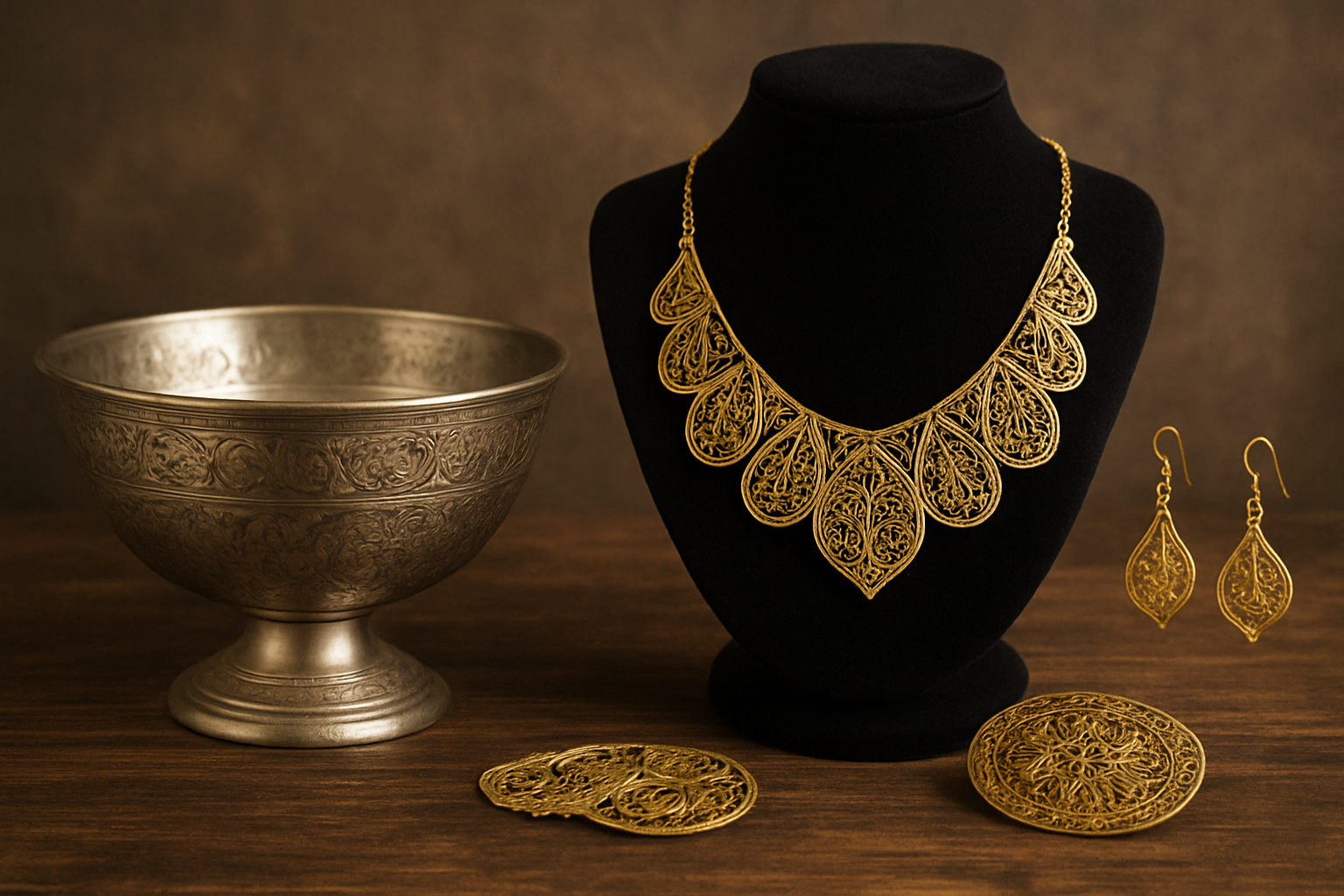
Georgia, at the crossroads of Europe and Asia, has long been a land of cultural fusion and artistic mastery, and one of the most fascinating aspects of its heritage is jewelry and craftsmanship that combines ancient techniques with timeless beauty. Among the most celebrated traditions are the making of table bowls, the artistry of goldsmithing, and the delicate craft of filigree, all of which together tell the story of refinement, resilience, and creativity. Georgian table bowls are more than simple vessels; they embody the country's deep-rooted connection to hospitality and communal life. Crafted from silver, copper, or bronze and often adorned with engravings of floral motifs or geometric patterns, they were traditionally placed at the center of the Georgian supra, the famous feast celebrating food, wine, and togetherness. Beyond functionality, they carried symbolic meaning, with designs believed to bring prosperity or protection, and many bowls remain treasured heirlooms passed down through families. Georgian goldsmithing illustrates another level of sophistication. Since antiquity, Georgia was known as a land of gold, even inspiring the Greek myth of the Golden Fleece, linked to ancient gold panning in Georgian rivers. Archaeological finds from Colchis and Iberia reveal exquisite necklaces, bracelets, and diadems dating back thousands of years, showing mastery of granulation, cloisonné enamel, and other advanced techniques. These jewels were not only ornaments but also symbols of wealth, power, and spirituality. Over centuries, goldsmithing evolved yet preserved its traditional importance, and modern Georgian jewelers still create pieces that reflect both history and contemporary style. The art of filigree stands out as one of the most delicate traditions. Made by twisting thin threads of gold or silver into lace-like designs, it requires extraordinary patience and precision. Filigree became highly developed in Georgia during the Middle Ages, adorning jewelry, religious icons, and noble treasures. Its lightness and intricacy make it enchanting, a perfect balance of strength and beauty, and it remains a hallmark of Georgian craftsmanship today, especially in earrings, pendants, and brooches. Together, table bowls, goldsmithing, and filigree represent more than crafts; they embody Georgian identity, where artistry is woven into daily life and spirituality. Abundant natural resources in Georgia's mountains nurtured generations of artisans, while trade routes like the Silk Road brought influences from Byzantium, Persia, and beyond. Despite these exchanges, Georgian jewelry retained a distinctive character rooted in local mythology and devotion to beauty. For visitors today, exploring Georgian jewelry means entering a world where history and art converge. Museums in Tbilisi display breathtaking treasures from ancient kingdoms, while modern artisans continue the legacy with handmade bowls, filigree earrings, and gold ornaments available in workshops and boutiques. These are not mere souvenirs but cultural connections that celebrate creativity, history, and identity. Georgian craftsmanship endures as a symbol of a nation with a grand artistic spirit, reminding us that beauty and tradition transcend time.






 Deutsch
Deutsch
 русский
русский
